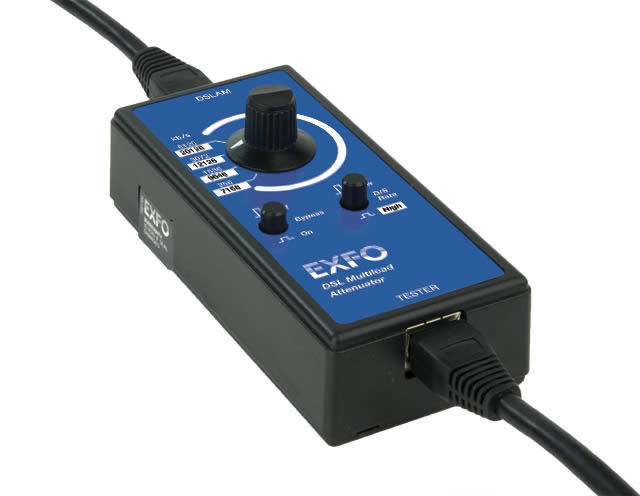


Características principales
Prueba del rendimiento de los puertos ADSL2+ con atenuación específica según la tecnología (longitud simulada)
Simula la atenuación de seis longitudes diferentes e ignora señales ADSL/2/2+
Seguro para su utilización en la oficina central (CO) o la estación: sin componentes electrónicos que puedan fallar ni baterías que se deban reemplazar; sin emisiones electrónicas
Dispositivo portátil liviano y compacto, fácil de transportar a cualquier lugar
No se requieren cables especiales: acepta la mayoría de los cables de prueba comunes
Fácil de operar: manipulación intuitiva y simple

Aplicaciones
Reducción de envío y referencia de la oficina central/estación
Recuperación de puertos ADSL
Verificación de nuevos puertos DSLAM
Aislamiento de secciones de cable de rendimiento de DSL
Description
The must-have accessory to enhance your xDSL test solution
The DSL Multiload Attenuator enables several money-saving, practical applications: ADSL2+ port performance verification at the CO/exchange or remote DSLAM upon provisioning, surveillance and recovery of DSL ports previously decommissioned, DSLAM port isolation and verification during troubleshooting, and even faulty cable span replacement to verify DSL rate and reach. In each case, it quickly helps isolate the DSL port as a source of trouble, thus reducing repeats and getting to the real problem faster.
Used in combination with EXFO ADSL test sets, the DSL Multiload Attenuator can help reduce CO/exchange dispatches by up to 10% per year, per exchange.
- Positively clears ADSL 2/2+ ports “in”, with ADSL capabilities and purpose-built DSL multiload attenuator designed from customer feedback
- Automatically tests subscriber cables “out”, for ADSL 2/2+ specific issues
- Automatically identifies high-frequency crosstalk that impacts ADSL 2/2+
- Easy enough for frame technicians to use with minimal training, as shown in trial
Key benefits
- Reduce CO/exchange repeats by 10% or more per year (eliminate one referral/dispatch per day)
- Reduce referrals to OSP repair by locating the problem sooner—so it can be fixed sooner
- Avoid unnecessary CAPEX to add capacity or replace good ports
- Restore service and customers on as many as 70% of disabled ports, and recapture revenue


